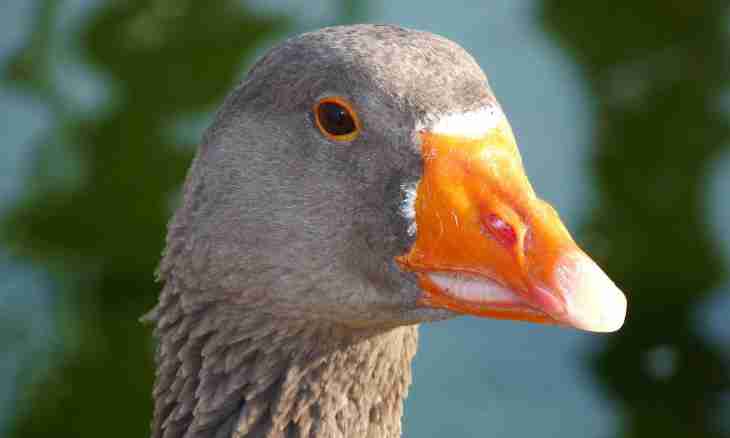Ducks and geese belong to natatorial and have many common features. Plumage of these birds is impenetrable for water, and paws are supplied with membranes. Food, nesting and even pairing are connected in their life with water. And still, between a duck and a goose there are rather serious differences which are most noticeable in coloring and the sizes of representatives of this group.
It is required to you
- The biological encyclopedia, the ecological dictionary, the computer, the websites about birds, the ticket in a zoo.
Instruction
1. Sizes. A shape of a body at geese and ducks are similar, and here the sizes differ. The goose is much larger than a duck. As well legs of a goose are much longer than duck. They are supplied with a long tsevka — a spur and rather short fingers. These features give the chance to geese perfectly to move by land and, besides, pretty fast to run.
2. Neck. Geese possess perfectly developed long neck which gives them such regal look and excretes from other birds. And here at a duck the neck is much shorter. But this moment to them does well only. Such building allows ducks to be dipped in search of a forage into water by a tail up, and the head down, absolutely vertically.
3. Beak. The duck has the flat beak which is perfectly adapted for food on water. Beak of a goose, on the contrary, large, higher and less flat. It is supplied with peculiar "claw" on the end. Such building allows a goose to pull out easily grass bunches from the earth.
4. Coloring. At the majority of species of ducks the coloring of men's and female individuals strongly differs among themselves. This sexual dimorphism is brightly shown during the marriage period when plumage of males gets especially saturated shades.
5. Sounds. Voices of ducks are various. But, owing to features of the structure of the voice device, all of them quite strongly differ from goose sounds. A "pipe" loud laughter of a goose - loud and shrill, and during danger it is replaced with hissing.
6. Food. The duck can be fed even at night. Unlike ducks, the goose never eats at night, and sleeps ashore or walks on water. The goose eats only vegetable food. The duck, unlike geese and swans, is fed not only vegetable, but also animal food. It eats small crustaceans, snails, fish, young frogs and even crabs. In other words, the duck eats everything that occurs in the path and suits her by the sizes.
7. That upon purchase to distinguish a goose carcass from duck, it is necessary to remember several simple moments: 1. the carcass of a goose is larger than a carcass of a duck; 2. the goose-pimples have more expressed, rough structure, than duck; 3. meat of a goose of more dark color, than meat of a duck.

